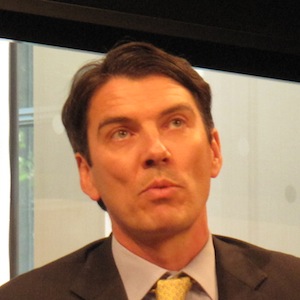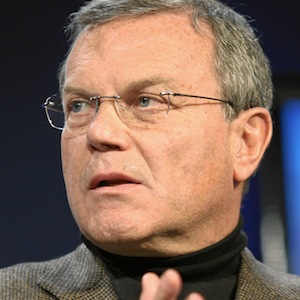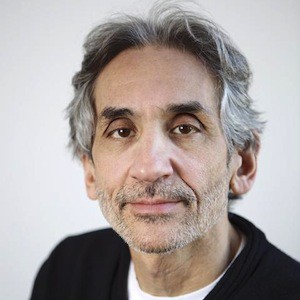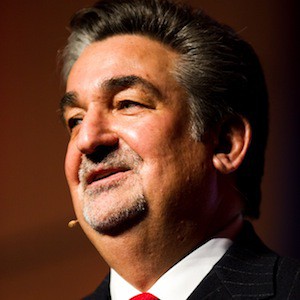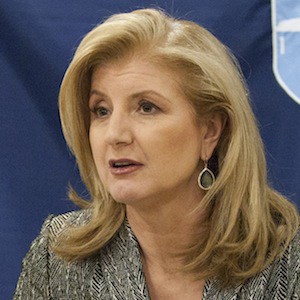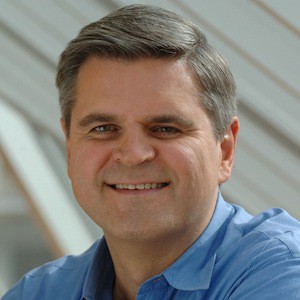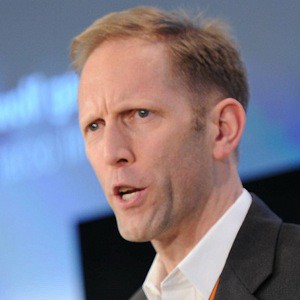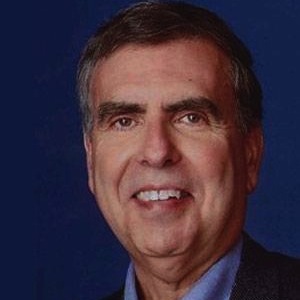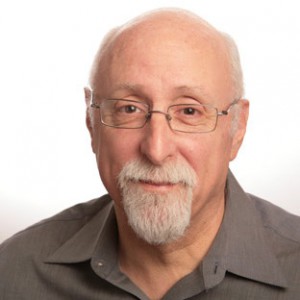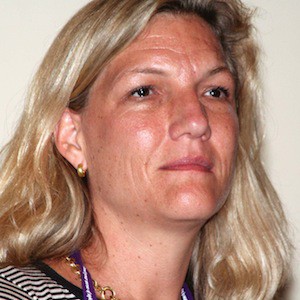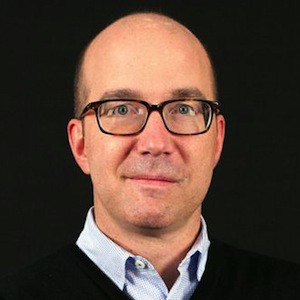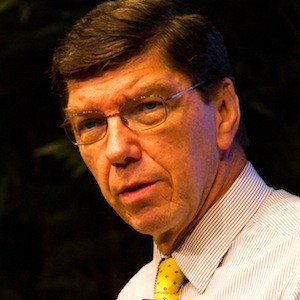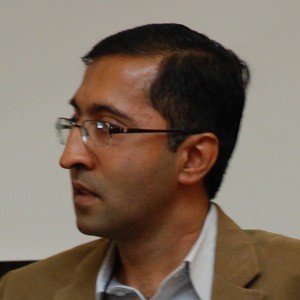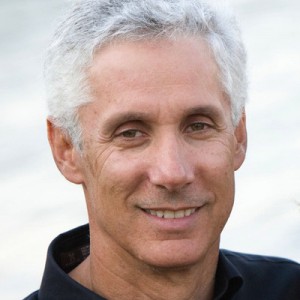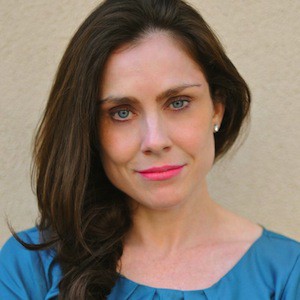Paul: It’s April 12th. It’s Paul Sagan. I’m in New York City at the offices of AOL with Tim Armstrong. Thanks for having us in.
Tim: Paul, good to see you.
Paul: Pleasure. Everyone thinks of you as a new media guy or a digital guy. We’re here at AOL where you’re running it. Known for Google, but you were a newspaper guy. So tell me that story, because you saw something and headed west from there. So back up.
Tim: After college, taught at Wellesley College for the summer. Then after that, thought I wanted to go into investment banking. I went to an investment bank for about six months. And that realized that that was not my true calling. Went out to talk to people and what I realized I think I was most passionate about I grew up reading a lot of business biographies was media. I decided to start a newspaper. I talked my best friend from high school into starting it with me. We started a publication called “Beginnings of Boston,” which was targeted at 20 year olds in Boston. It was an alternative newspaper.
I sold my car, sold my mountain bike, and bought a Quadra 650 Apple. I bought Page Maker Pro. We learned how to do everything from page design through editorial, through ad sales. That was my initial start in the newspaper business. It was probably the hardest thing I’ve ever done, also, maybe the most fulfilling overall, and a great introduction to media.
Paul: You were going to be a newspaper guy, that was the model, business probably looked great, you find the right niche of young people to add dollars flow, but you didn’t stick with that.
Tim: In our travels, we ended up getting another newspaper called the “Square Deal,” which was a publication in Cambridge Square that targeted Harvard students and tourist.
Paul: What year was this?
Tim: This was in 1993 1994.
Paul: The world is online and the dial up?
Tim: Yes. It’s dial up, and most people had not seen the Internet yet. Browsers at that time were pretty simplistic. People didn’t really know what browsers were. A couple of things happened during that time period. One, the biggest change for me personally was, I went to MIT one day with some friends, and we had lunch with some of the engineers from Mosaic. They turned on the Web and brought up Mosaic, and we looked at some of the rudimentary websites.
The minute it came on, the minute we started going through it and really looking, and they showed some of the new browser types coming out, I walked back to my office and I told the person I owned the newspapers with, “I’m selling my share. I don’t know what the Internet, how big it’s going to be, but I think it’s going to be huge.”
Within a couple of months, I sold our share of the newspaper and essentially went off to try to find Internet things to do, and the combination of media and Internet.
Paul: You went west?
Tim: I went west. I worked for Paul Allen’s company, Starwave, which was really probably the first scaled content company that was purely digital only. We launched espn.com it was ESPNet.SportsZone.com actually nfl.com, nba.com, abcnews.com, Mr. Show Biz, which was an entertainment site, and essentially stayed there. Starwave was an interesting combination of technologists from Seattle, and a lot of content people from New York, the East Coast. Everyone came together at one time, and it was just an explosion of engineering and content creativity in one place.
That experience for me was a game changer mentality wise from East Coast media with West Coast engineering mixing together. That company ended up getting bought by Disney. I ended up going back to New York to work for ESPN and ABC, but just a phenomenal experience in Seattle.
Paul: We were in Harry Motro’s garage earlier this week.
Tim: Oh, were you?
Paul: Because Harry, of course, started CNN and then went and ran Infoseek, which Bob Fonda merged in with Starwave and Disney. So these worlds all come together, but you really touched on two really important things that maybe we should poke on a little more. One was when you got out of it, you will, Tim Armstrong is the brand. Do you burn the boats? You got out of the newspaper business. You didn’t try to transition online and do two things. Most of the media companies have tried to do two things. Now, you’re obviously a small business man at the time. A little easier for you than a giant media company.
Then you went to a place that you referred to as this combination of content people and engineers, but the engineers were in charge. Mike Slade ran it and he was from Microsoft.
One of things that’s come up over and over again is that the winners online didn’t just have a lot of engineers. They had a lot of engineers and engineers ran it. The media companies, the traditional ones seem to have suffered, because they either didn’t hire a lot of engineers or couldn’t, and they never would have put engineers in charge.
Do you think there’s something to success came from having to become an engineering culture and run from the top in a different way?
Tim: Yeah, the interesting thing is in the media business if you look historically back like if you read the Hearst biography and a lot of, actually CNN and those things technology played a huge role in the start of those businesses. They scaled tremendously, but over a long period of time, the engineering focus at those companies went down and the content focus went way up. I think what the Internet did was actually reintroduce the importance of engineering at the start of a new medium. Really the companies that focused on engineering have had a huge advantage. I think where we are in the cycle right now it’s actually interesting is that I think the combination of engineering and content ability or media ability is what’s going to define the future.
I told people that I work with AOL, and even when I was back at Google, I think the single biggest opportunity is connecting the railroad tracks between Silicon Valley and New York media. Because if you look at where things are commoditizing right now, the non commoditization of the Internet’s going to come from media and services and that real human touch side of things connecting with the technology.
I think the companies probably way back when, even if you look at what Hearst did in the newspaper business, there was constant investments in new technology printing and colorization and distribution and those things. But over time, that probably became more of a stasis, commoditized part of the business.
The Internet has reintroduced the ability for engineering to actually build significant moats around businesses. Now, what’s happened is a lot of those moats have been built. I think the media side of that creativity’s coming back in.
Paul: So you went west. Then you came back here to ESPN, but then something pretty big happened. You wound up at Google. Talk about that.
Tim: The way I ended up at Google actually was I had sat through the Disney integration with Infoseek and with Starwave. I got put on a team with, I think, McKinsey analysts to travel around to the different businesses to look at the businesses. In traveling around to the different businesses, Disney was interested in launching the Go Network, which was a multi billion dollar investment by Disney to go online.
Paul: A URL, a domain that still exists.
Tim: It still exists www.go.espn.com, I think, is still or espn.go.com…
Paul: Is still the default.
Tim: …is still the default.
Paul: Re direct.
Tim: And that’s the re direct. I had one meeting that changed the course of what got me to Google in that the combination of those businesses. At Infoseek, we interviewed the sales team at Infoseek. Two salespeople got into a physical yelling match and almost a physical fight over the value of keywords. This is in 1998. When we sat back to do the Go Project, we wrote in a room all the things that Disney could potentially invest in. There was a lot of investment in email and things like that. I had raised my hand, saying, “In all the travels we did, there was only one thing that actually had the biggest emotional connectivity on the revenue front.
It was search and people fighting over the keywords. Essentially, search was not looked at as an important part of it, but that stuck in my brain.
I had been using Google as a user and they didn’t really have the advertising on it at the time period, so when Google called and I went to meet with them…
Paul: Probably because you found it through AOL or Yahoo! Or direct?
Tim: Yeah, I found it through AOL, actually. Just direct, actually, from the Internet, but I think I was using AOL at the time period. I had started to use Google. When they called, my first conversation with Google was really…I told them this story of hey, I’m interested in Google because I think from a revenue opportunity, advertising was the only thing in the entire Go Network research that we did that looked like there was a real significant revenue opportunity. Since Google was testing advertising and looking at it, I told them my interest level was really because early on, it looked like search was going to be a major opportunity for advertising revenue.
Paul: When did you go and what did you do first?
Tim: At Google? At Google, I started in 2000, in September of 2000. My job was essentially to run ad sales. There were about three or four people that they had in the advertising group at Google and my first job was to essentially ramp up ad sales, which was controversial at Google.
Paul: Which was AdSense, eventually, and was text based search results, not display.
Tim: It started with targeting text ads on search pages. After the first couple years, we went to Larry and Sergey and essentially said “Why don’t we take the search ads off of the search page and put them on…” We actually marked up some PowerPoints with About.com. We just cut and pasted search ads and put them on the About.com page and said “Let’s take our ad system out to the web.” That was a project we tested and it looked like it was going to be successful. We bought Applied Semantics. They’re a company that did relevancy targeting. Essentially, that turned into a massive business at Google. Not just doing search ads on our own properties, but putting ads on other publishers’ sites.
Paul: Martin even remembers…He thinks maybe your first meeting with publishers, or one of them, to talk about this roll out of AdSense to publishers, to other sites, and asking you if Google had designs on display ads, too. You said no.
Tim: Yeah.
Paul: Then three years later, you bought DoubleClick and the world changed again and in a really big way.
Tim: Fundamentally, from our standpoint, AdSense and taking more revenue out to the web, was purely a function of us actually looking…We had an issue with customers, where customers had loaded in their full ad budgets to do search ad targeting and in many cases were only able to use 60 or 70 percent. We have, literally…
Paul: They couldn’t spend…?
Tim: They couldn’t spend the full amount of money they wanted to spend. That’s what got us…It was that guy named John Firm, at Google, and I who went through and put together the About.com page with the things on purely to solve the customer need of how do they spend their full budget. That basically translated into us going out to talk to the people about putting the search ads on. People asked us how the gates…”Hey, is this just going to be search or are you guys going to get into display?” Our original intent was just to do search ads and then what happened was, two or three years later, we realized customers were coming to us saying, “Hey, it’s so efficient to put all my budget into one system and have it run on search in other places. Can I put my display budget in and do that?”
We tried to build our own display system, but we were in ongoing talks with David Rosenblatt from DoubleClick. Essentially, it made sense for us to, instead of build it ourselves, buy DoubleClick because DoubleClick had built all the piping. People don’t realize what the ad business is. The ad businesses is about sales on top and selling advertising.
What it’s really about is putting piping into all the major customers, into their billing side and those areas and finance side. DoubleClick had done that. For Google to replicate that would have taken years, so we bought DoubleClick.
We essentially came up with a new strategy chart, which showed on one side of it. We would basically have all the advertisers. In the middle, we’d have a Google system, and on the other side, we would actually be agnostic towards what type of ads and what type of revenue we took. Shooting to web…We launched the Google TV business, the radio business.
We actually ran ads in print. We used the Google system to actually buy print ads and put them in magazines and we tested that. We really thought very big and broad about how do you have one system serve the whole ecosystem of advertising. I’m not as up to speed on what Google’s doing today, but I think that’s similar to what their current thoughts are.
Paul: Certainly for the buyer, for the advertiser, they added an awful lot of efficiency and convenience. For the publisher, it was part of a double whammy, though. The other was the invention…First, Yahoo! News and then Google News. It became a giant sucking sound where half of the ad dollars or more on the Internet go to Google today between the combination of search and display. Because of effectively infinite banner inventory and targeting, for publishers it’s been a mess. The transition of dollars to digital dimes or nickels or maybe pennies. What do you think the answer is? Does that sort itself out in some way for publishers going forward? Otherwise, many of them, except those that can find some subscription model, just aren’t faring very well.
Tim: You hit on a bunch of things there, but I think there’s really three really big things underneath that that matter for publishing in the future. Number one is you can’t apply your offline cost structure in the way you do business online. It’s not fair to compare offline dollars to digital dimes. The reality is underneath the digital dimes in many cases, you can have a much lower cost structure. If you look at the difference between hosting on Amazon and running a content property versus having trucks and distribution and printing plants, there’s also dime costs versus dollar costs on the digital side. That’s one. Second thing is I think it’s really important here and this point is important for our publishers. You have to be excellent at yield management and yield dynamics.
A lot of the challenge I see on the traditional publishing side is a lot of people did not have multiple revenue streams. They had a sales force selling their properties. Whereas in the digital world, you actually can take multiple inputs of revenue stream and multiple customer segmentations and yield management’s a really important concept.
By the way, yield management comes with engineering, also. You actually have to engineer the yield management, so if you’re…
Paul: It’s a math problem.
Tim: It’s a math problem and you need engineers to work on it. At AOL, we have a large yield management, which is run by PhDs in computer science. I don’t know whether or not the larger publishing industry offline has thought in that adoption curve. The third thing, actually, is you have to essentially set your customer segmentation out, your revenue segmentation, your distribution segment out to maximize the current changes in the distribution, consumer, and revenue landscape online. What looks like a flat problem of I’m creating content and I need to monetize at a level is actually a cubed problem where you have to mix all of those things together and manage them together. It’s looked as a huge problem in the industry.
I think it’s also the single biggest opportunity. Because if you get really good at doing that at scale, it’s a massive strategic advantage. That’s one of the things we’re trying to build at AOL now.
Paul: Let’s move to that. You did the Google thing. Remind me, what year did you come to AOL and take on a whole new challenge? Then we’ll talk about that, particularly on the content journalism side.
Tim: Sure. In 2009, I decided to leave Google to come to AOL. AOL was inside of Time Warner. Job number one, for the first year, was to financially structure the company, to spin it out. At that time period, we decided, in that year of getting ready to spin out, what the strategy was going to be. AOL’s strategy is clearly hooked around becoming the world’s largest media technology company.
Paul: That sounds like being two things. How is it one? Let’s talk about it, particularly in the media or the content side. Because you made two big bets. One is national or even global, around “Huffington Post.” The other is local, around “Patch.”
Tim: AOL is a media technology company. I think there’s a false question in, “Which one are you?” By the way, going back 20 years to Starwave, people used to ask us that. “Are you a media or a technology company?” The issue is, in today’s landscape, you have to be both. The media technology company, if you lose one side of it, we lose a competitive advantage. I’d say we’re one. We have, essentially on the content side, decided to invest in what I’m going to call human brands. Technology changes all the time, but human needs don’t. There are 10 or 15 things in people’s lives they really care about. They care about family. They care about work. They care about where they live. The investments that we’ve made, overall, as a business, are directed at those really deep human need states.
We bought The Huffington Post, because we felt like there was an open opportunity to build news at a cross country, global level that would mix in video, mobile and if you look at the distribution of news offline, it’s tended to be in distribution systems in different countries, in different places. Whereas the Internet would give us the ability to build a global news brand that was cross country format, cross language format, cross topic format, across a number of verticals.
We see the ability to build that platform for the next two decades, in a very large scale. This second one was on the local basis, which is local matters to people. They live in communities. The average person on Patch is an investment we have in almost 1000 towns in the US. The highest GDP towns. The consumers stay there for 16 to 18 years.
Their kids grow up there. They spend 80 percent of their revenue within a 15 mile radius of those towns. The opportunity in each individual town, each town represents about $900 million of commerce. If you strip out houses and autos, there’s about $300 350 million of just transactional things there. We believe that it’s maybe one of the largest white spaces left online.
Also that local information, for people, is a top five or seven thing in their lives. We want to be the company that fulfills that for them. As Huffington Post globally fulfills the news and information vacuum, Patch would do it at a localized level, at a very low cost structure, compared to what offline is.
Paul: Let me ask you, just a little more on each one. Let’s do Huffington Post first. They were an ultimate aggregator in the beginning, with almost no original content, just a little bit wrapped around. There’s even been the debate about whether that was fair use or not, but most people who complain didn’t push the point. Built a big audience and then started to create original content, even won a Pulitzer Prize. That ought to be the answer. That’s the first answer to, “Are you doing something original?” There’s certainly one positive answer that the newsroom can give, and a strong one. What’s the business model? We talked to Arianna and she said, “It’s got to be advertising. It’s got to be a free business.” Do you get to the point where it breaks even and it makes money and can sustain the investment, to keep growing, to build the two decade vision? Does that work as an ad only business?
Tim: One is, The Huffington Post is a multi decade opportunity. It’s a multi decade opportunity on the growth trajectory, with our current model, with advertising and scaling it up, including investing in content. “Huffington Post Live,” which is the first cable channel for the web, live cable channel, also is another significant investment. People don’t realize how strategic that is, over time. Looking at those two models, we can scale that property, globally, on a revenue basis off of advertising, which will be profitable and a good investment for our shareholders. The second piece I would say is, I would leave open whether or not that’s the only business model, long term.
We see the opportunity where consumers like paying for content, if you see what they’re paying for. Whether it’s Huffington Post or one of our other content properties, my guess is, in the future, we will test more and more business models around, “How do you make money doing content?” That piece of it is really strategic and important for us, overall.
The investments we’re making today, in free content, are having big impacts, in terms of the usage we’re getting, those things. It’s highly likely, over time, usage will grow. We’re seeing it grow. On the advertising and revenue side, we’re seeing that grow. That looks like a good pathway for the future. I would also say we’ll be open to opening up multiple pathways.
Both on the consumer distribution and on the revenue side. I could see Huffington Post Live going to TV or cable. Not just being on the web. We’ll look at multiple, different ways to distribute and monetize content.
Paul: Or maybe TV comes to the web and catches up.
Tim: Right.
Paul: That’s another story, but it’s ripe for change too. Maybe we end on the Patch question. We’ve talked to a lot of people. If you look over the landscape, the entities that have suffered the most have been local, primarily newspapers and primarily in the middle. The national brands arguably are doing OK. “New York Times,” “Wall Street Journal.” The hyper local, the “Where Warren Buffet’s buying today,” they are still by and large profitable and finding value. It’s the mid level. Look at cities where the newspaper doesn’t exist or there is no seven day a week. Look at New Orleans. Now a three day a week. And who knows if that lasts.
One of the points that Julius Genachowski made today is, in many ways the market definition, the DMA for newspapers in the broadcast license requirement meant that traditional media underserved those communities because they had to do the whole metros.
You’ve segmented down to towns, with a different model. But where arguably the base is going to be smaller and the cost basis has to be something completely different. How much original journalism can you do and do you think that fills that need for quality journalism or content? Does it become a business, too?
When you look at the total commerce, the total amount of marketing dollars, reasonably what share you could get, because you can’t get it all, no matter how good you are, how does that add up to be a business? Does that mean each town gets 10 reporters, one reporter or someone who shows up once a year?
Tim: The model on Patch was really basic and really simple. We looked at the economics per town. We stack ranked about 18,000 towns in the US. We used 59 variables to do an algorithm to stack rank the most valuable town to least valuable town. We took the Wal Mart strategy. Essentially, Wal Mart’s known for low prices. Originally, when Wal Mart started, it was started to bring big city goods and services to small town America. We wanted to bring big city Internet to small town America and digitize towns. That’s the focus of Patch. The Patch business model relies on the Clay Christensen innovator’s dilemma.
Paul: Who was talking to us yesterday.
Tim: Oh, was he?
Paul: Yeah. He is the most mentioned person in this history. He does very little work in this area.
Tim: We happen to be big fans of his. What we looked at was, could we do a multi 100 percent of the current content of the town at a fraction of the cost. The model we came up with was, run a town media property for under $150,000 a year on the cost side. Try to do 300 percent of the content. So increase the amount of content in the town by 300 percent.
Paul: Against what existed offline?
Tim: Against what was existing offline. Can we generate more and more content online? And open it up to the community. Our model mixes highly edited, highly trusted content in town, with community interactions, board postings and those things. What we’ve found is, the community really likes trusted information and trusted content and trusted journalism. It’s a must have. The second piece is, they like the ability to upload content against those things, themselves because they’re going to have more interactivity than one editor can do. The model that we’ve built is, $150,000 or lower per town cost in media markets that have $10 30 50 million media markets in those zip codes, overall. Our ability to get two, three, four percent of the media dollars on that platform in a town, Patch becomes profitable.
When people look at the Patch investment overall, they say, “Whoa, you guys are investing a significant amount of money at an AOL level in local.” That’s not how we look at it. We look at it at a micro town basis. If you looked at investments from 1960 to 1995 in local community newspapers, it was one of the best investments. Great revenue, great margins. Even at a higher cost structure than what we’re doing.
If you look at what Warren Buffet’s investing in, he’s investing in the hyper local newspapers that have great revenue, profit margins and consumers that don’t move.
Paul: Arguably, they are metros, identify as a city, not as a suburb, but a town.
Tim: But a town. We have the same model he does, which is, invest in towns. The regional newspapers, in general…The overall thing, across the entire Internet right now, regardless of what content space you’re in is, don’t get caught in the middle. If you go back to the Andy Warhol statement of people care about high end luxury and they care what happens on the street. Anything else in between comes across as mediocre to consumers. That’s where the Internet is on local today. You either should be national, New York Times, Wall Street Journal, Huffington Post, or you should be hyper local and mean something to consumers. Our investment, we call it the bar bell investments, tend to be at both sides of those bar bells.
Actually, I’m pushing the company right now to go as far in that direction as possible. The last place we want to be in, as a business, is in the middle. We’re avoiding everything that puts us in the middle.
Paul: Did I leave anything out you wanted to say?
Tim: Maybe one thing about what I see happening on the network side of the future.
Paul: Absolutely.
Tim: One thing in the future that’s happening today and you’re seeing, I would point out the HTC handset that just came out that puts content on the front of the screen. You have billions of consumers…
Paul: In this case, it’s a Facebook home page.
Tim: There’s two different versions. The Facebook home page, there’s also a version that has instant content updates on the front. If you look at, right now, in 2013 you have Amazon, Google, Microsoft with Xbox. All those companies, Apple, starting to invest more and more either in content distribution or content itself. I believe, over time, Silicon Valley is getting more commoditized on the device, network front. Those things. You’re seeing, essentially, the same thing that’s happened in media, over time. Distribution and technology of the content gets going first. Then people go back to content investing. AOL was highly criticized at the beginning of our investment cycle. But when you think about where we are today and you look at what the news is, coming out of all the big technology companies, content is becoming a bigger and bigger investment.
You can almost look across any device, any network, any handset content is starting to get mentioned. I believe we’re at the beginning of a content revolution in 2013, which will probably last, again, multi decade. The most important contents brands and content properties are going to be the most important things to consumers.
Paul: Thank you.
